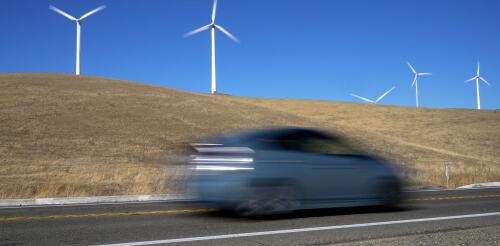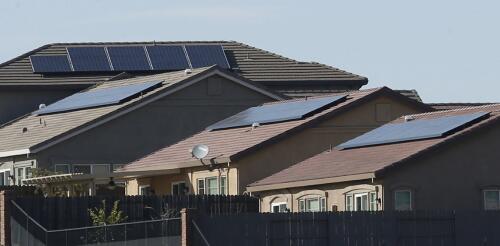Electricity
Imagine a future with nearly silent air taxis flying above traffic jams and navigating between skyscrapers and suburban droneports. Transportation arrives at the touch of your smartphone and with minimal environmental impact. This isn’t just science fiction. United Airlines has plans for these futuristic electric air taxis in Chicago and New York. The U.S. military is already experimenting with them. And one company has a contract to launch an air taxi service in Dubai as early as 2025. Another company hopes to defy expectations and fly participants at the 2024 Paris Olympics. Backed by billions of dollars in venture capital and established aerospace giants that include Boeing and Airbus, startups across the world such as Joby, Archer, Wisk and Lilium are spearheading this technological revolution, developing electric vertical takeoff and landing (eVTOL) aircraft that could transform the way we travel. Electric aviation promises to alleviate urban congestion, open up rur...
The U.S. power grid is the largest and most complex machine ever built. It’s also aging and under increasing stress from climate-driven disasters such as wildfires, hurricanes and heat waves. Over the past decade, power grids have played roles in wildfires in multiple states, including California, Hawaii, Oregon and Minnesota. When wind speeds are high and humidity is low, electrical infrastructure such as aboveground power lines can blow into vegetation or spark against other components, starting a fire that high winds then spread. Under extreme conditions, utilities may opt to shut off power to parts of the grid in their service areas to reduce wildfire risk. These outages, known as public safety power shutoffs, have occurred mainly in California, where wildfires have become larger and more destructive in recent decades. On April 5-6, 2024, Colorado utility Xcel Energy carried out that state’s first public safety power shutoff, cutting power to thousands of custo...
Panasonic’s new US$4 billion battery factory in De Soto, Kansas, is designed to be a model of sustainability – it’s an all-electric factory with no need for a smokestack. When finished, it will cover the size of 48 football fields, employ 4,000 people and produce enough advanced batteries to supply half a million electric cars per year. But there’s a catch, and it’s a big one. While the factory will run on wind and solar power much of the time, renewables supplied only 34% of the local utility Evergy’s electricity in 2023. In much of the U.S., fossil fuels still play a key role in meeting power demand. In fact, Evergy has asked permission to extend the life of an old coal-fired power plant to meet growing demand, including from the battery factory. With my students at Wellesley College, I’ve been tracking the boom in investments in clean energy manufacturing and how those projects – including battery, solar panel and wind turbine...
Small-scale solar power, also known as rooftop or distributed solar, has grown considerably in the U.S. over the past decade. It provides electricity without emitting air pollutants or climate-warming greenhouse gases, and it meets local energy demand without requiring costly investments in transmission and distribution systems. However, its expansion is making it harder for electric utilities and power grid managers to design fair and efficient retail electricity rates – the prices that households pay. Under traditional electricity pricing, customers pay one charge per kilowatt-hour of electricity consumption that covers both the energy they use and the fixed costs of maintaining the grid. As more people adopt rooftop solar, they buy less energy from the grid. Fewer customers are left to shoulder utilities’ fixed costs, potentially making power more expensive for everyone. This trend can drive more customers to leave the system and raise prices further – a...
Rechargeable batteries are great for storing energy and powering electronics from smartphones to electric vehicles. In cold environments, however, they can be more difficult to charge and may even catch on fire. I’m a mechanical engineering professor who’s been interested in batteries since college. I now lead a battery research group at Drexel University. In just this past decade, I have watched the price of lithium-ion batteries drop as the production market has grown much larger. Future projections predict the market could reach thousands of GWh per year by 2030, a significant increase. But, lithium-ion batteries aren’t perfect – this rise comes with risks, such as their tendency to slow down during cold weather and even catch on fire. Behind the Li-ion battery The electrochemical energy storage within batteries works by storing electricity in the form of ions. Ions are atoms that have a nonzero charge because they have either too many or not eno...




